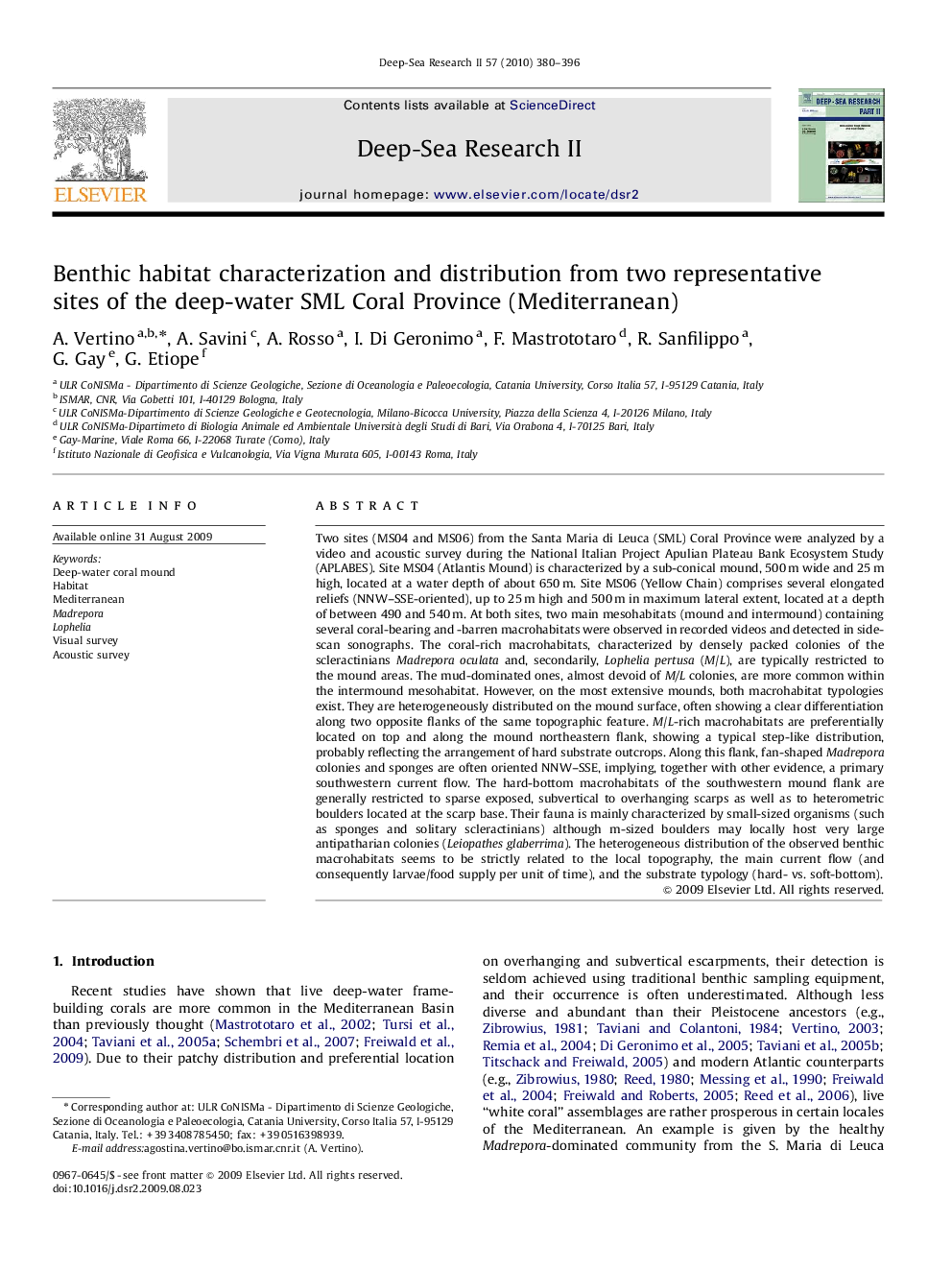| کد مقاله | کد نشریه | سال انتشار | مقاله انگلیسی | نسخه تمام متن |
|---|---|---|---|---|
| 4537205 | 1626478 | 2010 | 17 صفحه PDF | دانلود رایگان |

Two sites (MS04 and MS06) from the Santa Maria di Leuca (SML) Coral Province were analyzed by a video and acoustic survey during the National Italian Project Apulian Plateau Bank Ecosystem Study (APLABES). Site MS04 (Atlantis Mound) is characterized by a sub-conical mound, 500 m wide and 25 m high, located at a water depth of about 650 m. Site MS06 (Yellow Chain) comprises several elongated reliefs (NNW–SSE-oriented), up to 25 m high and 500 m in maximum lateral extent, located at a depth of between 490 and 540 m. At both sites, two main mesohabitats (mound and intermound) containing several coral-bearing and -barren macrohabitats were observed in recorded videos and detected in side-scan sonographs. The coral-rich macrohabitats, characterized by densely packed colonies of the scleractinians Madrepora oculata and, secondarily, Lophelia pertusa (M/L), are typically restricted to the mound areas. The mud-dominated ones, almost devoid of M/L colonies, are more common within the intermound mesohabitat. However, on the most extensive mounds, both macrohabitat typologies exist. They are heterogeneously distributed on the mound surface, often showing a clear differentiation along two opposite flanks of the same topographic feature. M/L-rich macrohabitats are preferentially located on top and along the mound northeastern flank, showing a typical step-like distribution, probably reflecting the arrangement of hard substrate outcrops. Along this flank, fan-shaped Madrepora colonies and sponges are often oriented NNW–SSE, implying, together with other evidence, a primary southwestern current flow. The hard-bottom macrohabitats of the southwestern mound flank are generally restricted to sparse exposed, subvertical to overhanging scarps as well as to heterometric boulders located at the scarp base. Their fauna is mainly characterized by small-sized organisms (such as sponges and solitary scleractinians) although m-sized boulders may locally host very large antipatharian colonies (Leiopathes glaberrima). The heterogeneous distribution of the observed benthic macrohabitats seems to be strictly related to the local topography, the main current flow (and consequently larvae/food supply per unit of time), and the substrate typology (hard- vs. soft-bottom).
Journal: Deep Sea Research Part II: Topical Studies in Oceanography - Volume 57, Issues 5–6, March 2010, Pages 380–396